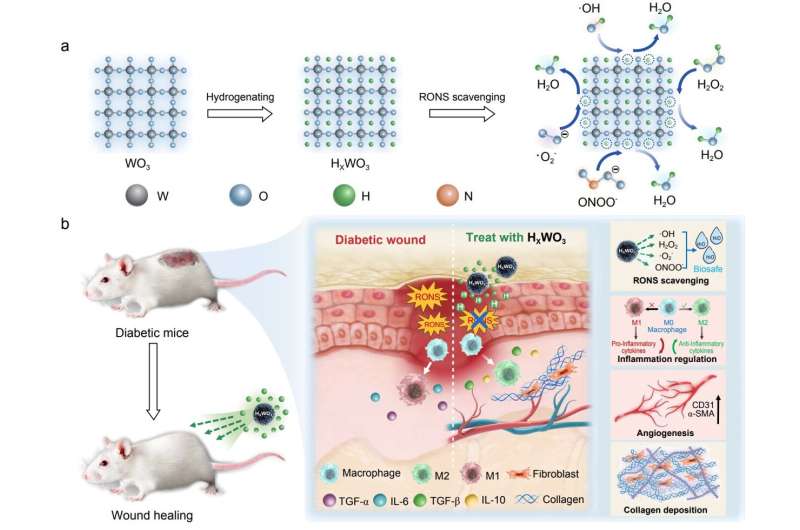This article has been reviewed according to Science X's editorial process and policies. Editors have highlighted the following attributes while ensuring the content's credibility:
fact-checked
trusted source
proofread
Investigating solid-state atomic hydrogen as a potential hydrogen therapy strategy

The overexpression of reactive oxygen and nitrogen species (RONS) is closely associated with the onset and progression of diverse chronic diseases, such as cancer, Alzheimer's disease, and chronic diabetic ulcers. Hydrogen therapy, as an emerging and promising general-purpose therapeutic approach, normally utilizes molecular H2 to selectively eliminate RONS and maintain intracellular redox homeostasis, thereby treating related chronic diseases.
The more bioreducible atomic hydrogen is expected to provide a broad-spectrum RONS scavenging capability superior to that of conventional H2. However, the development of an advanced hydrogen therapeutic platform combining sufficient atomic hydrogen loading, controllable release, and biodegradability remains a giant technological challenge.
To address this issue, a team led by Prof. Jun Jiang and Prof. Yucai Wang from the University of Science and Technology of China (USTC) has recently successfully introduced highly reducible atomic hydrogen into the WO3 lattice using an electron-proton co-doping strategy, demonstrating for the first time that atomic hydrogen eliminates a broad spectrum of RONS that conventional H2 cannot.
Furthermore, the tungsten bronze phase H0.53WO3 (HWO) was found to be a highly desirable carrier for atomic hydrogen, with remarkable features including high-capacity hydrogen storage, controllable hydrogen release, and pH-responsive biodegradability. In a diabetic wound model, the atomic hydrogen remodeled the diabetic wound microenvironment and alleviated inflammation, which in turn promoted collagen deposition and angiogenesis, effectively accelerating chronic wound healing.
"From the perspective of thermodynamics and chemical kinetics, atomic hydrogen is far more reactive than molecular H2, whereas its storage and utilization are extremely tricky. Thanks to the electron-proton co-doping strategy, we have realized the deposition of atomic hydrogen in metal oxides under mild conditions," Prof. Jun Jiang said.
"In a wider sense, the basic category of hydrogen therapeutic materials is no longer limited to the commonly active metals/non-metals or their hydrides. Hydrogen species in more physical forms are available as efficient RONS scavengers to play a positive role in hydrogen-centered therapeutic strategies."
The study is published in the journal National Science Review.
More information: Man Luo et al, Solid-state atomic hydrogen as a broad-spectrum RONS scavenger for accelerated diabetic wound healing, National Science Review (2023). DOI: 10.1093/nsr/nwad269
Provided by Science China Press




















